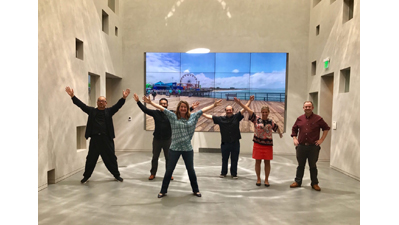Friends and colleagues, I cannot help but feel lucky and grateful that 2017 has brought fresh and exciting new opportunities. In that spirit and effective immediately, I’m thrilled to announce that my research lab, the Transplant Research and Education Center (TREC), is expanding its research and education portfolio. Currently, TREC is an interdisciplinary research and education team that conducts state of the art clinical research to understand and improve important issues affecting transplant outcomes, intervenes to reduce disparities in access to transplantation for diverse patient and donor populations, and tests the effectiveness of interventions to increase transplant referrals and living donation rates. Through collaborations with healthcare providers, national transplant leaders, and healthcare policymakers, we translate findings from effective clinical trials into practice to ensure that patients can live longer and enjoy the best possible quality of life.
Over the next three years I will continue in my current role as UCLA Associate Professor, and also serve in the dual role I have undertaken as Deputy Director of Transplant Research and Education at the Terasaki Research Institute. It’s my sincere hope that this new partnership will significantly advance the field of kidney transplant patient education and patient centered outcomes; address, and offer solutions to, racial disparities in transplantation; and improve adherence to immunosuppressive drugs post-transplant.
Like me, those involved with the Terasaki Foundation believe in organ transplantation and the idea that through collaboration with leading physicians and scientists, and biotechnology, pharmaceutical, and medical device companies, we will solve the major problems limiting the rates and success of organ transplantation. The Terasaki Research Institute is working hard to build a better understanding of human immunology and the transplant patient through innovation, and by studying the immune system and the transplant patient in ways not done before. Their research supplies the transplant community with a new understanding of how to achieve success in transplantation and possibly other diseases. I feel privileged to add to this mission by providing patient education and outcomes expertise.
Anyone who has worked in the transplant field, or spent much time on the campus of the University of California, Los Angeles, has probably heard the name Terasaki. The Foundation is named for its founder, Dr. Paul Terasaki (1926-2016), an American scientist who was a pioneer in the field of human organ transplant technology, and was professor emeritus of surgery at UCLA’s David Geffen School of Medicine.
Dr. Terasaki’s contributions to transplant cannot be overstated––he created the test that became the international standard method for tissue typing, which allows medical professionals to determine the compatibility between cells and tissue. This procedure enables organ recipients to be matched with their donors and has been used in heart, pancreas, liver, bone marrow and kidney transplants for more than 40 years. People all over the world are able to live longer and healthier lives because of his work. Dr. Terasaki was also known for his philanthropy and his support of Japanese-American cultural organizations.
For these reasons, and many others, I am honored to help advance the research and scholarship that Dr. Terasaki pioneered.
For more news about this partnership and advances in transplant education, I invite you to follow us on Twitter and Facebook @ExploreTxplant.
– Amy Waterman, PhD

